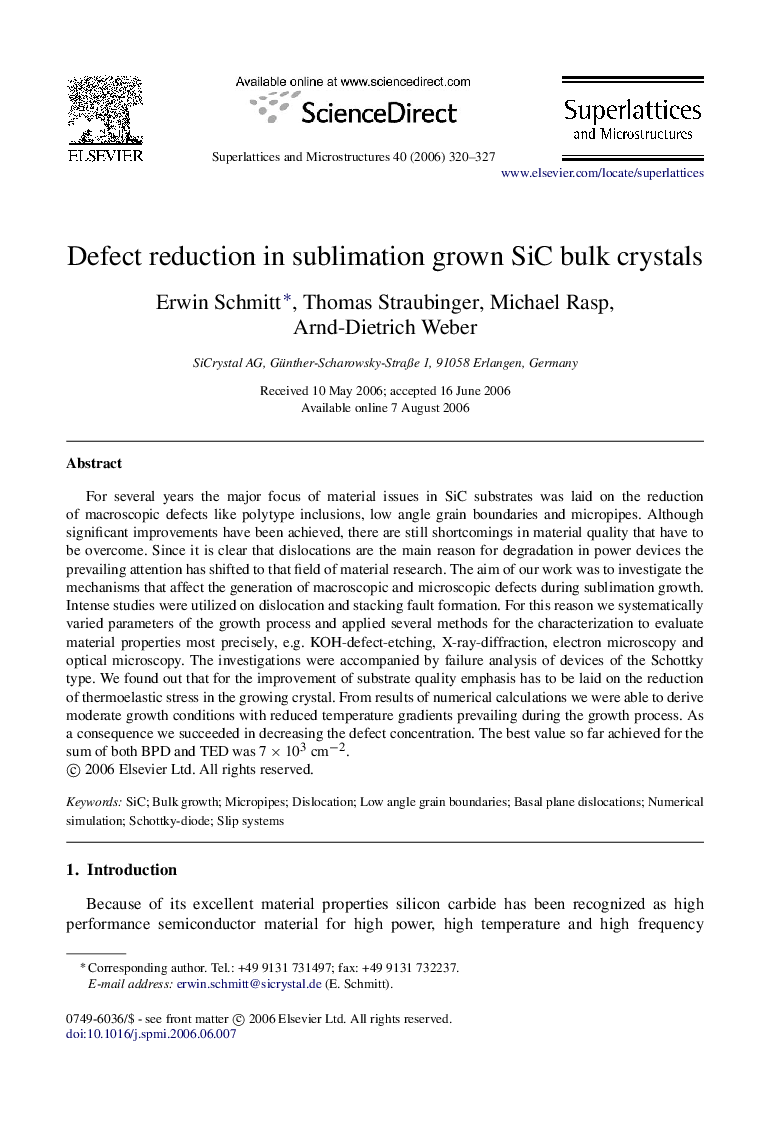| Article ID | Journal | Published Year | Pages | File Type |
|---|---|---|---|---|
| 1555220 | Superlattices and Microstructures | 2006 | 8 Pages |
Abstract
For several years the major focus of material issues in SiC substrates was laid on the reduction of macroscopic defects like polytype inclusions, low angle grain boundaries and micropipes. Although significant improvements have been achieved, there are still shortcomings in material quality that have to be overcome. Since it is clear that dislocations are the main reason for degradation in power devices the prevailing attention has shifted to that field of material research. The aim of our work was to investigate the mechanisms that affect the generation of macroscopic and microscopic defects during sublimation growth. Intense studies were utilized on dislocation and stacking fault formation. For this reason we systematically varied parameters of the growth process and applied several methods for the characterization to evaluate material properties most precisely, e.g. KOH-defect-etching, X-ray-diffraction, electron microscopy and optical microscopy. The investigations were accompanied by failure analysis of devices of the Schottky type. We found out that for the improvement of substrate quality emphasis has to be laid on the reduction of thermoelastic stress in the growing crystal. From results of numerical calculations we were able to derive moderate growth conditions with reduced temperature gradients prevailing during the growth process. As a consequence we succeeded in decreasing the defect concentration. The best value so far achieved for the sum of both BPD and TED was 7Ã103Â cmâ2.
Keywords
Related Topics
Physical Sciences and Engineering
Materials Science
Electronic, Optical and Magnetic Materials
Authors
Erwin Schmitt, Thomas Straubinger, Michael Rasp, Arnd-Dietrich Weber,
